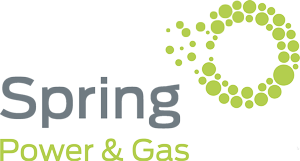Have you ever flipped on a light switch and wondered where that power comes from? Most of us don’t think twice about how electricity gets to our homes, but it’s a fascinating journey behind the scenes. In this guide, we’ll break down the electricity generation process in a way that’s easy to understand, even if you’re not a science expert.
What is electricity?
Let’s start with the basics. Electricity is a form of energy created by moving electrons—tiny particles inside atoms. These electrons can flow through materials like copper wires, creating what we know as an electric current.
The electricity generation process (step by step)
First, we need a source of energy. This can be:
- Fossil fuels like coal, oil, and natural gas
- Renewable sources like wind, sunlight, or water (hydropower)
- Nuclear energy
Each of these sources is used to produce heat or mechanical energy.
- Turning a Turbine
In most power plants, that heat or motion is used to spin a turbine—imagine a giant fan. For example, in a natural gas power plant, gas is burned to produce hot steam that turns the turbine.
- Generating Electricity
The spinning turbine is connected to a generator. Inside the generator, magnets and coils of wire work together to turn mechanical energy into electrical energy. This process is called electromagnetic induction—it’s how most of our electricity is made.
Power plants explained
Here’s a quick look at how different power plants create electricity:
- Coal and Gas Plants: Burn fuel to create steam that spins turbines.
- Nuclear Plants: Nuclear plants use a reaction called fission to generate heat and produce steam.
- Hydropower Plants: Use flowing water to spin turbines.
- Wind Turbines: The wind directly turns the blades, spinning the generator.
- Solar Panels: Use sunlight to create electricity without moving parts (no turbine needed!).
Each method has its pros and cons, especially when it comes to cost, efficiency, and environmental impact.
According to the U.S. Energy Information Administration (EIA), in 2022, about 60% of electricity in the U.S. came from fossil fuels, 18% from renewables, and 19% from nuclear energy.
Source: EIA.gov
Renewable energy: clean power for the future
Renewable energy is growing fast—and for good reason. These energy sources come from natural processes that are constantly replenished, which means they don’t run out and they produce little or no pollution.
Here are the most common types of renewable energy:
Solar energy
Solar panels capture sunlight and convert it into electricity using a technology called photovoltaics. It works even on cloudy days, and it’s becoming more affordable every year.
Wind energy
Wind turbines harness the natural power of the wind. As the blades spin, they drive a generator that produces clean electricity.
Hydropower
This uses moving water—like rivers or dams—to turn turbines and create electricity. It’s one of the oldest and most reliable forms of renewable energy.
Biomass energy
Biomass energy comes from organic materials like wood, crops, and even waste. When burned or processed, these materials release energy that can be used for electricity or heating.
Geothermal energy
This taps into the heat beneath the Earth’s surface to generate power. It’s clean and available 24/7, unlike solar or wind.
According to the U.S. Department of Energy, renewable energy could provide nearly 45% of the nation’s electricity by 2050 if we continue to invest in clean energy technologies.
Source: Energy.gov
By switching to renewable energy, we can reduce air pollution, fight climate change, and support a healthier planet.
From the plant to your home
Once the electricity is generated, it travels through high-voltage power lines to reach neighborhoods and businesses. It goes through transformers that reduce the voltage to safer levels before it enters your home.
Why it matters
Understanding the basics of how electricity is generated empowers us to make better choices as consumers. For example, choosing renewable energy plans or using less electricity during peak hours can significantly reduce strain on the system and support cleaner energy sources.
Make the switch to clean energy with Spring Power & Gas
You don’t need to build your own solar panels to support a greener future—you need to choose the right energy provider. At Spring Power & Gas, we offer affordable and sustainable energy plans that help reduce your carbon footprint without changing your lifestyle.
Ready to power your home with more innovative, cleaner energy?
Join the movement. Switch to Spring Power & Gas today.
Learn more about our energy plans
Sources:
U.S. Energy Information Administration: https://www.eia.gov/energyexplained/electricity/how-electricity-is-generated.php
U.S. Department of Energy: https://www.eia.gov/energyexplained/renewable-sources/






